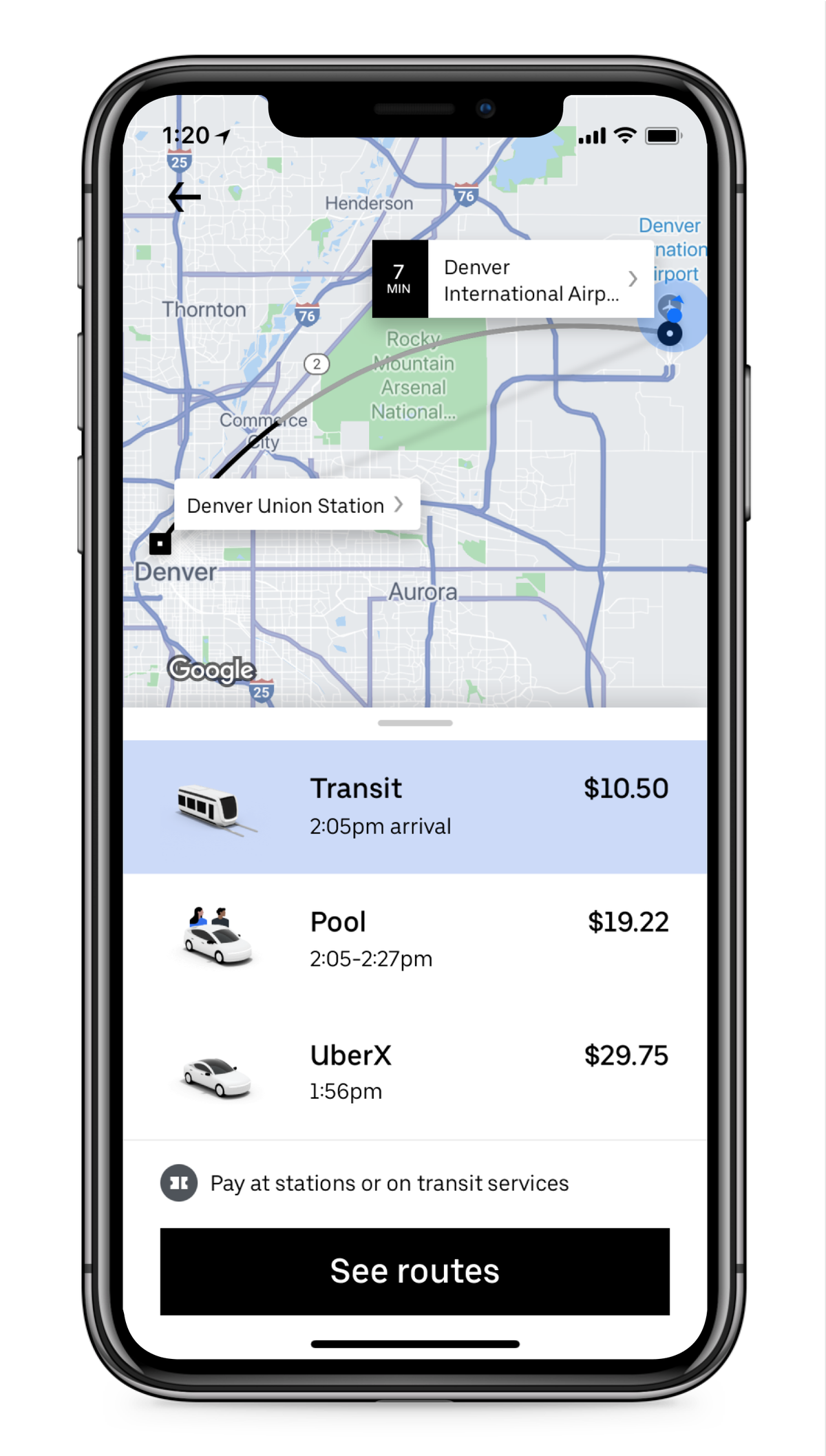Uber customers who live in Denver may notice something strange when they open the company’s app today: a tiny train car with the word “transit” next to it, sitting atop the list of usual ride-hailing options. A quick tap produces a list of bus or train routes as well as the expected fare price and end-to-end directions. It’s the first example of Uber’s year-long effort to integrate public transportation options into its app.
According to the company’s transit team, the goal is to discourage people from using their personal vehicles by offering more transportation options, whether that’s a bike, scooter, or now, a bus or train. It’s no secret that Uber wants to become the “One Ring” for transportation, the app that brings all other modes together and, in the darkness, binds them.
This is happening at a time when Uber is facing mounting criticism for its negative effects on public transportation across the country. Declining bus and subway ridership has been pegged to the rise of Uber’s popularity in dozens of cities. The company hopes to blunt that criticism by giving transit equal footing in its app.
“We should prepare transit for the future, and make it the most competitive way to get around, because that’s what we want to see,” says Andrew Salzberg, Uber’s head of transportation policy and research. “We’re so confident that transit is in fact the best way to get around in many cities that we want to put it in our app as a rider proposition.”
This theory will be first tested out in Denver. Uber riders in Denver will now see real-time bus and rail information when they open the app, courtesy of transit data firm Moovit. And in a few weeks, they’ll even be able to buy train tickets in the Uber app, thanks to a partnership with mobile ticketing company Masabi.
:no_upscale()/cdn.vox-cdn.com/uploads/chorus_asset/file/13728007/Product_Selector.png)
This could be a boon for Denver, which has struggled to keep pace with regional growth. Total transit trips in the Denver region are gradually on the rise. But with its population also increasing, the city has funneled millions of dollars into highway expansion projects. As long as Denver keeps building more car capacity, people will drive more, and the region will get less value out of the transit investments it makes.
It’s unclear whether the appearance of transit options in the Uber app will do much to boost Denver’s transit system, but it certainly can’t hurt. No doubt it’s unusual for the company to promote a transportation option that does not specifically funnel money back into its own coffers. But since taking the reins in 2017, Uber CEO Dara Khosrowshahi has been on a mission to reform Uber’s reputation for rule-breaking, especially as the company plows ahead on its expected public offering later this year.
“We have a proud history of cannibalizing our own rides with cheaper services,” Salzberg says, citing Uber X (cheaper than Uber Black), UberPool, and then bike and scooter rides. “If there is a cheaper, better way to get you to where you want to go, we want to make that easy for our riders to find and use inside the app.”
Uber obviously benefits from integrating public transportation by training its riders to use its app over all the other apps that purport to be one-stop shops for transportation, like Transit, Citymapper, various e-scooter apps, and its main rival Lyft. “We don’t want people to jump between different apps, which sometimes have different information than others,” says David Reich, head of transit at Uber.
Eventually, Uber hopes to begin offering multimodal options, assuming the company can convince customers to take more Uber trips to and from bus stops or train stations. And the addition of in-app ticketing is another potential source of revenue. Finding new ways to earn money is crucial for the cash-burning Uber, which has said it doesn’t expect to be profitable for at least three years and faces increasing competition in the ride-hailing sector. “This is a starting point for us,” Reich said.
